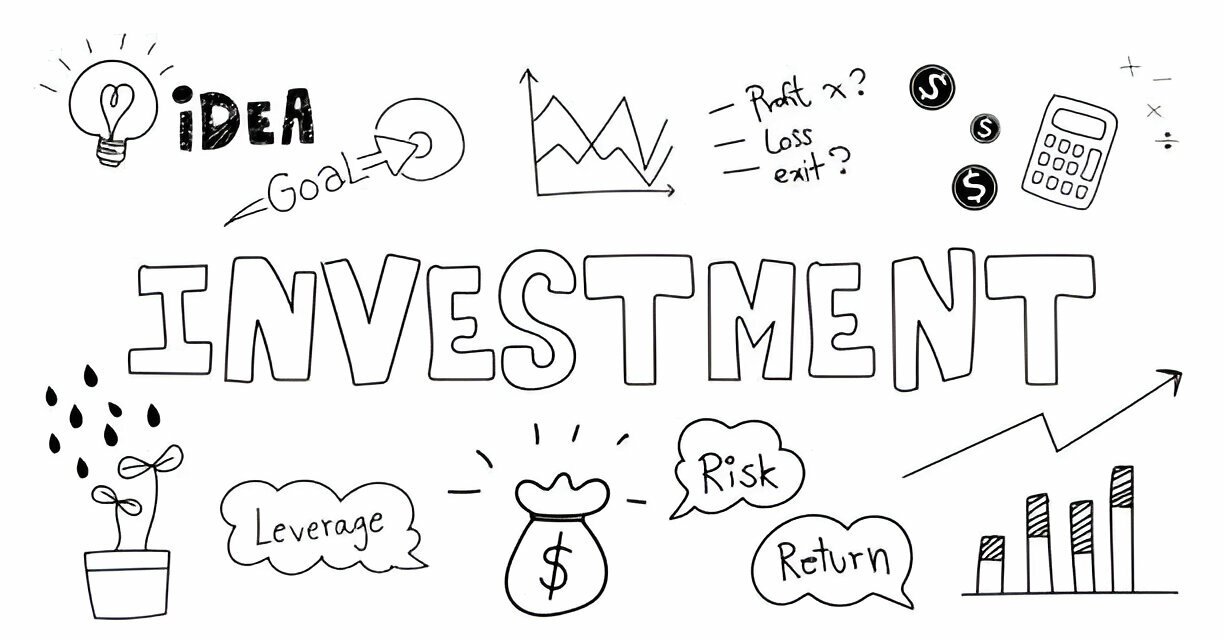Common Investment Mistakes That Cost You Money: A Comprehensive Guide to Avoiding Costly Financial Pitfalls
Investing can be one of the most powerful tools for building wealth, but it’s also fraught with potential pitfalls that can derail your financial goals. After analyzing thousands of investment portfolios and market data over the past decade, certain patterns of costly mistakes emerge repeatedly among both novice and experienced investors.
The average investor significantly underperforms the market not due to lack of access to information, but due to behavioral and strategic errors that compound over time. Understanding these mistakes, and more importantly, how to avoid them—can be the difference between financial success and disappointment. More From mobelwealth: Complete Guide to Building Your First Investment Portfolio in 2025
The High Cost of Investment Mistakes
Investment mistakes aren’t just theoretical concepts; they have real, measurable impacts on your wealth. According to Dalbar’s Quantitative Analysis of Investor Behavior, the average equity investor earned just 10.29% annually over the 20-year period ending in 2019, while the S&P 500 returned 13.56% annually during the same period. This 3.27% annual difference might seem small, but over two decades, it represents hundreds of thousands of dollars in lost wealth for the average investor.
The root cause? Behavioral mistakes that stem from emotional decision-making, lack of proper planning, and fundamental misunderstandings about how markets work.
Mistake #1: Trying to Time the Market
Market timing, attempting to predict when to buy low and sell high, is perhaps the most seductive and destructive investment mistake. The allure is obvious: if you could consistently buy at market bottoms and sell at peaks, you’d dramatically outperform buy-and-hold strategies.
The reality is starkly different. Research from the University of Michigan shows that missing just the 10 best days in the market over a 20-year period can cut your returns nearly in half. The problem is that the best and worst days often cluster together, making it nearly impossible to time entries and exits correctly.
Consider the dot-com crash of 2000-2002. Many investors who sold during the crash missed the subsequent recovery that began in 2003. Similarly, during the 2008 financial crisis, investors who panic-sold missed the massive bull run that followed. Those who stayed invested and continued dollar-cost averaging into their portfolios often recovered their losses and achieved significant gains.
The mathematical reality is that you need to be right twice with market timing: when to get out and when to get back in. Professional fund managers, with teams of analysts and sophisticated tools, consistently fail at this. S&P Dow Jones Indices’ SPIVA report shows that over 90% of actively managed funds underperform their benchmark over 15-year periods.
Alternative Strategy: Instead of timing the market, focus on time in the market. Consistent, regular investing through dollar-cost averaging smooths out volatility and removes the emotional component from investment decisions. More From Mobelwealth: Understanding Compound Interest: The Math Behind Wealth Building
Mistake #2: Emotional Investing: Fear and Greed
Emotions are an investor’s worst enemy. Fear causes us to sell at the worst possible times, while greed drives us to buy at market peaks. This emotional rollercoaster creates a destructive pattern of buying high and selling low—the exact opposite of successful investing.
The behavioral finance concept of “loss aversion” explains why we feel the pain of losses roughly twice as strongly as the pleasure of equivalent gains. This psychological bias leads to poor decision-making during market volatility. When markets drop 20%, the emotional urge to “cut losses” often overrides logical analysis.
During the COVID-19 market crash in March 2020, many investors panicked and sold their holdings near the bottom. The S&P 500 fell nearly 34% from its February peak to its March low. However, those who held or even bought during the crash were rewarded handsomely, the market recovered to new highs by August 2020.
Morningstar’s research consistently shows that investors in mutual funds earn less than the funds themselves report because of poor timing decisions. The average investor moves money into funds after good performance (buying high) and withdraws after poor performance (selling low).
Building Emotional Discipline: Successful investing requires developing systems that remove emotions from the equation. This includes having a written investment plan, setting up automatic contributions, and avoiding constant portfolio monitoring during volatile periods. More From Mobelwealth: Real Estate Investment Trusts (REITs): A Beginner’s Guide
Mistake #3: Lack of Diversification
“Don’t put all your eggs in one basket” is investment advice as old as time, yet many investors still make critical diversification errors. True diversification goes beyond just owning different stocks, it involves spreading risk across asset classes, sectors, geographies, and time periods.
The dangers of poor diversification are well-documented. Employees who had their entire retirement savings in company stock learned harsh lessons during corporate collapses like Enron and Lehman Brothers. Even outside of fraud, company-specific risks can devastate concentrated portfolios. Research from the Federal Reserve shows that individual stocks have a 40% chance of experiencing a permanent 70% decline from their peak value.
Sector concentration poses similar risks. Technology investors who were heavily concentrated in tech stocks during the dot-com bubble saw their portfolios decline by 80% or more. More recently, investors overweight in growth stocks experienced significant losses in 2022 when rising interest rates caused a rotation toward value stocks.
Geographic diversification is equally important. Investors who only invest in their home country miss opportunities and increase risk. Vanguard’s research shows that adding international stocks to a U.S.-only portfolio can improve risk-adjusted returns over long periods.
Proper Diversification Strategy: A well-diversified portfolio should include domestic and international stocks, bonds, real estate (REITs), and possibly commodities. The exact allocation depends on your age, risk tolerance, and financial goals. Target-date funds can provide instant diversification for investors who prefer a hands-off approach.
Mistake #4: Chasing Performance and Hot Trends
The tendency to chase last year’s winners is a costly behavioral mistake that destroys long-term wealth. This performance chasing manifests in several ways: buying mutual funds after strong performance, sector rotation based on recent trends, and jumping on investment fads.
Mutual fund flows data illustrates this perfectly. Morningstar’s analysis shows that investors consistently pour money into funds after periods of strong performance and withdraw money after poor performance. This behavior guarantees buying high and selling low.
The dot-com era provides a classic example. Technology funds that gained 100%+ in 1999 saw massive inflows in 2000, just before the crash. Similarly, emerging market funds saw huge inflows in 2007 before underperforming for the next decade. More recently, cryptocurrency speculation in 2021 attracted investors at peak prices, leading to significant losses when the market corrected.
Sector rotation based on recent performance is equally problematic. Energy stocks were among the worst performers for most of the 2010s, leading many investors to underweight or eliminate energy exposure. Then in 2021-2022, energy became the best-performing sector, but most investors had already moved their money elsewhere.
Performance vs. Process: Instead of chasing performance, focus on investment processes that make sense over long periods. This means investing in broadly diversified, low-cost index funds rather than trying to pick winning sectors or fund managers.
Mistake #5: Neglecting Fees and Expenses
Investment fees might seem small, but they compound over time and can cost investors hundreds of thousands of dollars over a lifetime. A 1% annual fee might not sound significant, but over 30 years, it can reduce your portfolio value by more than 20%.
The SEC’s mutual fund fee calculator demonstrates this impact clearly. On a $10,000 investment with 7% annual returns, a 1.5% expense ratio costs $4,440 over 20 years compared to a 0.5% expense ratio. Scale this up to a lifetime of investing, and the difference becomes enormous.
Active fund management fees are particularly problematic because they often don’t deliver superior performance. Vanguard’s research shows that low-cost index funds outperform roughly 85% of actively managed funds over 15-year periods, primarily due to lower fees.
Beyond mutual fund expense ratios, investors face other fee-related mistakes: paying high commissions for individual stock trades, using high-cost financial advisors who don’t add value, and investing in products with complex fee structures like variable annuities.
Fee Optimization: Focus on low-cost index funds from reputable providers like Vanguard, Fidelity, or Schwab. These funds typically have expense ratios below 0.1%, dramatically lower than actively managed alternatives. For individual stock purchases, use low-cost brokers that offer commission-free trades.
Mistake #6: Ignoring Tax Implications
Taxes can significantly impact investment returns, yet many investors make decisions without considering tax consequences. This oversight can cost thousands of dollars annually and hundreds of thousands over a lifetime.
The most common tax mistake is holding investments in the wrong account types. Tax-inefficient investments like bonds and REITs should be held in tax-advantaged accounts like 401(k)s and IRAs, while tax-efficient index funds can be held in taxable accounts. Morningstar’s research shows that proper asset location can add 0.3-0.5% to annual returns.
Tax-loss harvesting is another missed opportunity. This strategy involves selling investments at a loss to offset gains, reducing current tax liability. Vanguard’s analysis suggests that systematic tax-loss harvesting can add 0.7% annually to after-tax returns.
Many investors also make the mistake of frequent trading in taxable accounts, generating unnecessary capital gains taxes. Each trade that results in a gain creates a taxable event, potentially pushing investors into higher tax brackets.
Tax-Efficient Strategies: Maximize contributions to tax-advantaged accounts first, hold tax-inefficient investments in these accounts, and consider tax-loss harvesting in taxable accounts. Tax-efficient index funds can also help minimize taxable distributions. More From Mobelwealth: Emergency Fund vs. Investing: How to Balance Both Financial Goals
Mistake #7: Not Having a Clear Investment Plan
Many investors jump into the market without a clear plan, leading to inconsistent decision-making and poor outcomes. Without defined goals, time horizons, and risk tolerance, investors are more likely to make emotional decisions during market volatility.
A proper investment plan should include specific, measurable goals (retirement at 65 with $1 million, buying a house in 5 years), appropriate asset allocation based on time horizon and risk tolerance, and regular rebalancing schedules. Research from Dalbar shows that investors with written financial plans tend to have better outcomes than those without.
The lack of a plan also leads to inconsistent investing. Some months investors might contribute $500, other months nothing, and during market downturns, they might stop contributing entirely. This inconsistency prevents the compounding effect that drives long-term wealth building.
Creating Your Investment Plan: Start by defining specific financial goals with timelines. Determine appropriate asset allocation based on your age and risk tolerance. Set up automatic contributions to remove emotions from the equation. Review and adjust annually, but avoid constant tinkering.
Mistake #8: Overconfidence and Overtrading
Overconfidence leads to excessive trading, which generates fees and taxes while often producing inferior returns. Research from the University of California shows that investors who trade most frequently tend to have the worst returns.
The rise of commission-free trading platforms has made overtrading easier and more tempting. Mobile apps with gamified interfaces encourage frequent trading by making it feel like entertainment rather than serious investing. However, frequent trading often leads to buying high and selling low, as emotions drive trading decisions.
Overconfidence also manifests in believing you can pick winning stocks or time the market. While some individuals do outperform over short periods, sustained outperformance is extremely rare. S&P’s SPIVA report shows that even professional fund managers struggle to beat the market consistently.
Developing Humility: Acknowledge that markets are generally efficient and that consistent outperformance is extremely difficult. Focus on broad diversification through low-cost index funds rather than trying to pick winners.
Building a Successful Investment Strategy
Avoiding these common mistakes requires developing a systematic approach to investing that removes emotions and behavioral biases from the equation. Here’s a framework for building a successful long-term investment strategy:
Start with Clear Goals: Define specific, measurable financial objectives with realistic timelines. Whether it’s retirement planning, buying a home, or funding children’s education, clear goals provide direction for your investment strategy.
Understand Your Risk Tolerance: Honestly assess how much volatility you can handle without making emotional decisions. Your risk tolerance should align with your time horizon—longer periods allow for more risk-taking.
Diversify Broadly: Use low-cost index funds to achieve broad diversification across asset classes, sectors, and geographies. This reduces risk while capturing market returns.
Automate Everything: Set up automatic contributions to remove emotions from investing decisions. Dollar-cost averaging through regular investments smooths out market volatility.
Focus on Costs: Minimize fees through low-cost index funds and efficient tax strategies. Every dollar saved in fees compounds over time.
Stay Disciplined: Stick to your plan during market volatility. The biggest gains often come after the biggest losses, but only if you stay invested.
Review and Rebalance: Periodically review your portfolio to ensure it aligns with your goals and risk tolerance. Rebalance annually or when allocations drift significantly from targets. More From Mobelwealth: The Best Investment Strategy By Age [Ultimate Guide]
The Long-Term Impact of Avoiding Mistakes
The cumulative effect of avoiding these investment mistakes is substantial. Consider two investors who both start with $10,000 and contribute $500 monthly for 30 years. The first investor makes several common mistakes: pays 1.5% in fees, times the market poorly (reducing returns by 2% annually), and makes emotional decisions during downturns. The second investor avoids these mistakes, investing in low-cost index funds and staying disciplined.
Assuming a 7% market return, the disciplined investor ends up with approximately $739,000, while the mistake-prone investor has only $408,000. The difference of $331,000 represents the true cost of common investment mistakes.
These numbers illustrate why investment education and discipline are so crucial. The markets provide adequate returns for most investors to achieve their financial goals, but behavioral mistakes can derail even the best-laid plans.
Frequently Asked Questions
Q: How do I know if I’m making emotional investment decisions? A: Signs include checking your portfolio daily, making investment decisions based on recent news or market movements, selling during market downturns, or buying investments that have recently performed well. If you find yourself losing sleep over market volatility or making frequent changes to your portfolio, emotions are likely influencing your decisions.
Q: What’s the difference between diversification and over-diversification? A: Proper diversification involves spreading investments across different asset classes, sectors, and geographic regions to reduce risk. Over-diversification occurs when you hold so many similar investments that you dilute potential returns without meaningfully reducing risk. For most investors, a portfolio of 3-4 broad index funds provides adequate diversification.
Q: How often should I check my investment portfolio? A: For long-term investors, checking quarterly or even annually is sufficient. Frequent monitoring can lead to emotional decision-making and overtrading. Set up automatic contributions and only check your portfolio when you need to rebalance or when your financial situation changes significantly.
Q: Is it ever appropriate to try to time the market? A: For the vast majority of investors, no. Market timing requires being right twice (when to sell and when to buy back) and even professional fund managers consistently fail at this. The few exceptions might include systematic rebalancing or tax-loss harvesting, but these aren’t true market timing strategies.
Q: How much should I expect to pay in investment fees? A: For index funds, expense ratios should be below 0.20%, with many large funds charging 0.03-0.10%. Actively managed funds typically charge 0.50-1.50%. If you’re paying more than 1% annually in total investment fees, you’re likely paying too much and should consider lower-cost alternatives.
Q: Should I invest in individual stocks or stick to funds? A: Most investors should focus on diversified index funds rather than individual stocks. Stock picking requires significant time, research, and expertise, and even then, success isn’t guaranteed. Index funds provide instant diversification and have consistently outperformed most stock-picking strategies over long periods.
Q: How do I know if my asset allocation is appropriate? A: Your asset allocation should reflect your age, risk tolerance, and time horizon. A common rule of thumb is to hold your age in bonds (so a 30-year-old might have 30% bonds, 70% stocks), but this should be adjusted based on your specific circumstances. Consider using target-date funds if you’re unsure about appropriate allocation.
Q: What should I do if I’ve already made some of these mistakes? A: Don’t panic or try to make up for lost time with risky investments. Acknowledge the mistakes, learn from them, and implement a disciplined strategy going forward. The best time to start investing properly was yesterday, but the second-best time is today. Focus on what you can control moving forward rather than dwelling on past mistakes.
Investment success isn’t about finding the perfect strategy or picking winning stocks, it’s about avoiding costly mistakes and staying disciplined over long periods. By understanding and avoiding these common pitfalls, you’ll be well-positioned to achieve your financial goals and build lasting wealth.












Loading comments...
Leave a Comment(Login required)